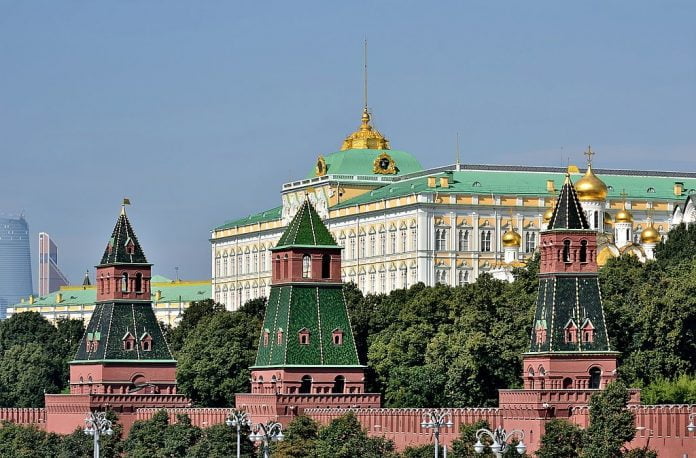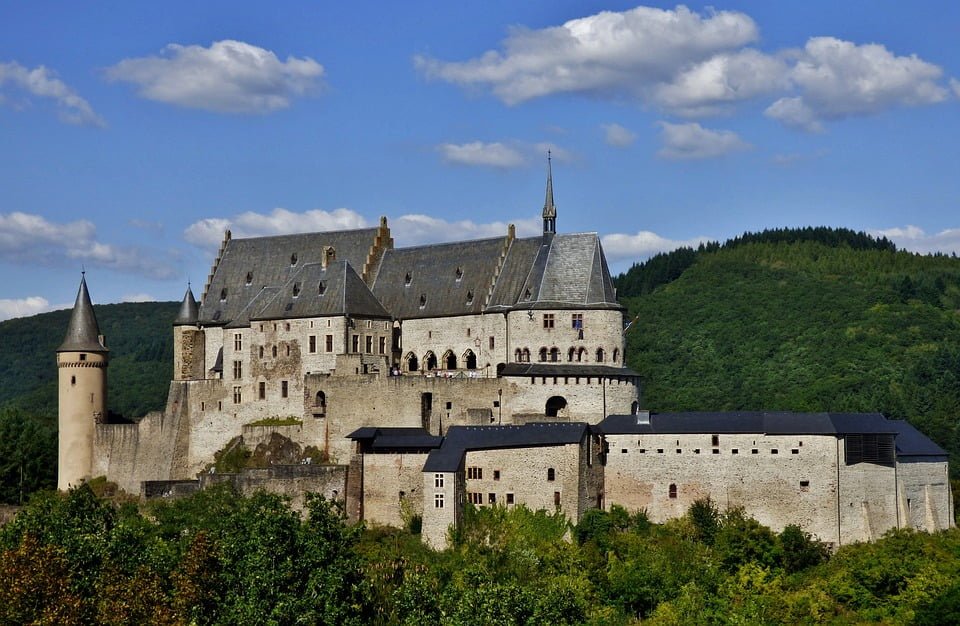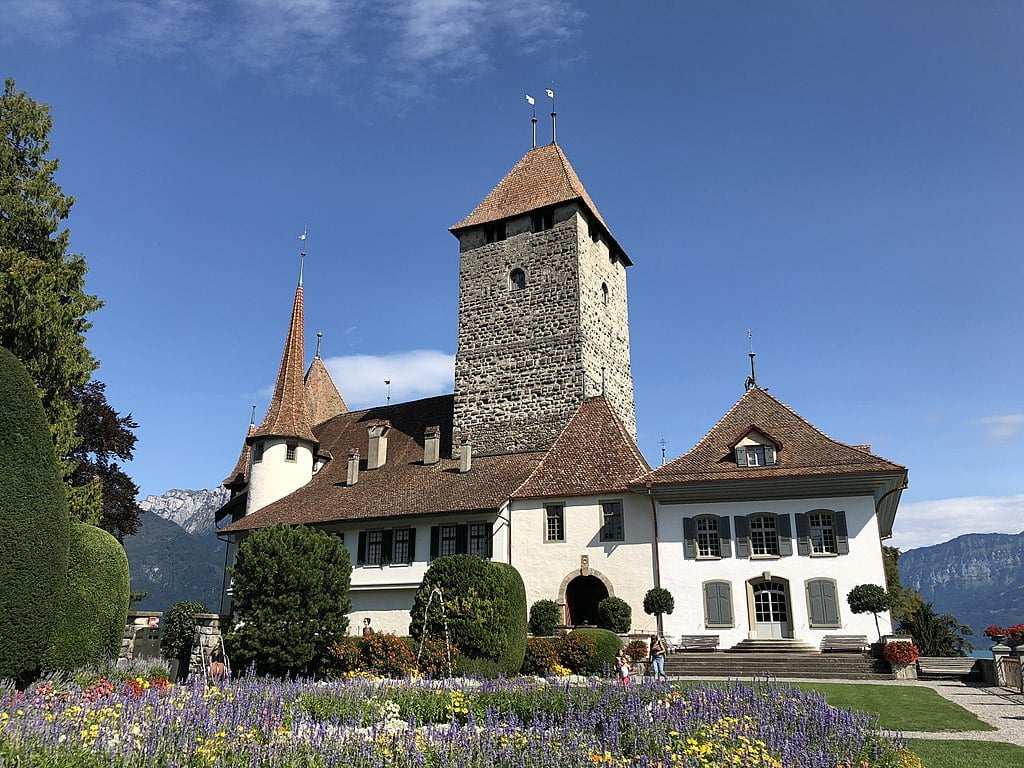A visit to the Moscow Kremlin is like a deep dive into the history of Russia itself. Having served as a key location for many empires and regimes spanning over six centuries, the complex may be considered the heart of Slavic history. A trip here is like readying yourself to experience the essence of Russian Tsardom as you venture through cathedrals and palaces of exquisite design and impressive structures courtesy of the best architects in European history. Here’s everything you need to know about it:
Table of Contents
The word ‘Kremlin’ literally translates to ‘fortress inside a city’
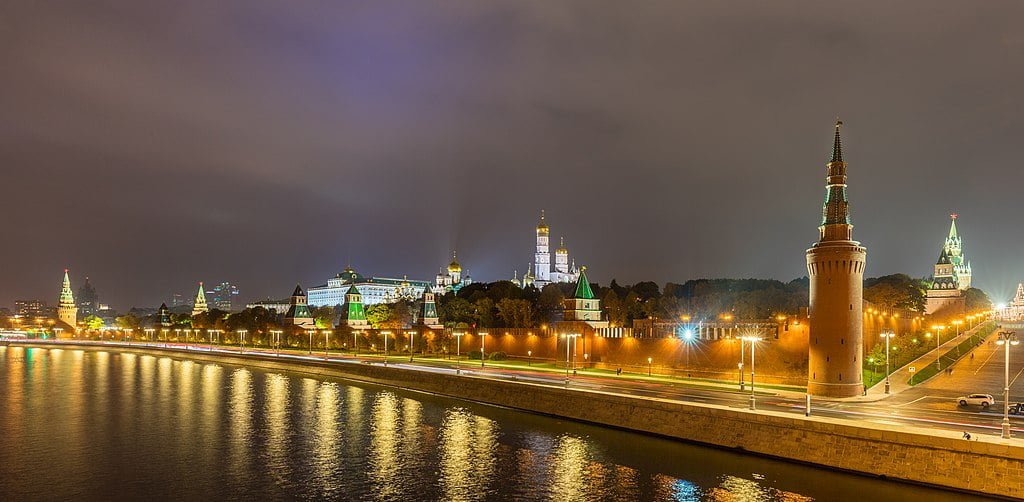
Frequently Asked Questions
Where is Moscow Castle Located?
Moscow Kremlin is located in the middle of Moscow, the capital of Russia.
When was Moscow Castle Built? Who Build It?
Moscow Kremlin was built between 1492 and 1495. It is an entire complex with several palaces and cathedrals, each having been constructed in different tenures by different owners.
When is The Best Time to Visit the Castle?
The best time to visit the Moscow Kremlin is during the warm months between May and September.
What Other Monuments are Located Nearby?
Other monuments situated in the area include Monument to Minin and Pozharsky, Marshal Zhukov monument, and The Monument to Vladimir the Great. You can also visit Lenin’s Mausoleum while you’re in Moscow.
FOR HISTORY | BEAUTIFUL IMAGES | INTERESTING FACTS | TRAVEL TIPS
Early History
The Earliest Traces (11th-15th Century)
The site has hosted fortified structures dating as far back as the 11th century. The Vyatichi people built the earliest one, known as the grad of Moscow. The structure was expanded in 1156 by Prince Yuri Dolgorukiy and lasted up until the 13th century when the Mongols took over.
The Mongols destroyed the structure in 1237 and replaced it with one built with oak. In the later half of the 14th century, Saint Dmitry reinforced the oak castle walls with white-colored limestone.
When his son took over, he commissioned the construction of churches and cathedrals on the property. During his tenure, in 1406, is when the Cathedral of Annunciation was painted by Theophanes the Greek, Andrei Rublev, and Prokhor. The ascension covenant was built in 1387 by the wife of the Tsar’s mentor while the mentor himself–Alexis, Metropolitan of Kiev– established the Chudov Monastery.
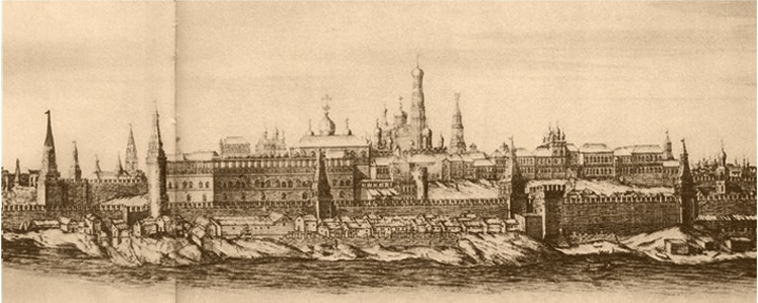
The Palace under Tsardom (16th-18th Century)
The castle served as a residence for Russian emperors for centuries. In the 16th century, the Kremlin Palace as we know it today was constructed to replace a throne room known as the Golden Hall.
The construction was funded by Elizabeth of Russia while Rastrelli designed it in the year 1752. For the reconstruction, the most renowned architects of the Italian renaissance era, such as Solarius (the architect behind the new Kremlin wall and its towers) and Marcus Ruffus (who is accredited for drawing up plans for a new palace for Prince Ivan III) were hired.
During Prince Ivan’s era, three massive cathedrals, the Deposition Church, as well as the Palace of Facets, were built. He also built what is now known as the Ivan the Great Bell Tower, which also happens to be the tallest building in Moscow.
The tower was constructed between 1505 and 1508 and was raised up to its current height in 1600. Solarius oversaw the construction of the Kremlin walls, as we know them now, between 1485 and 1495. Once the walls were constructed, the fortification was isolated from the rest of the town via a moat. No other properties were allowed within the fort’s surroundings. This occurred during the reign of Ivan the Terrible, who also added the Trinity Metochion (a type of Eastern Orthodox church) to the fortress.
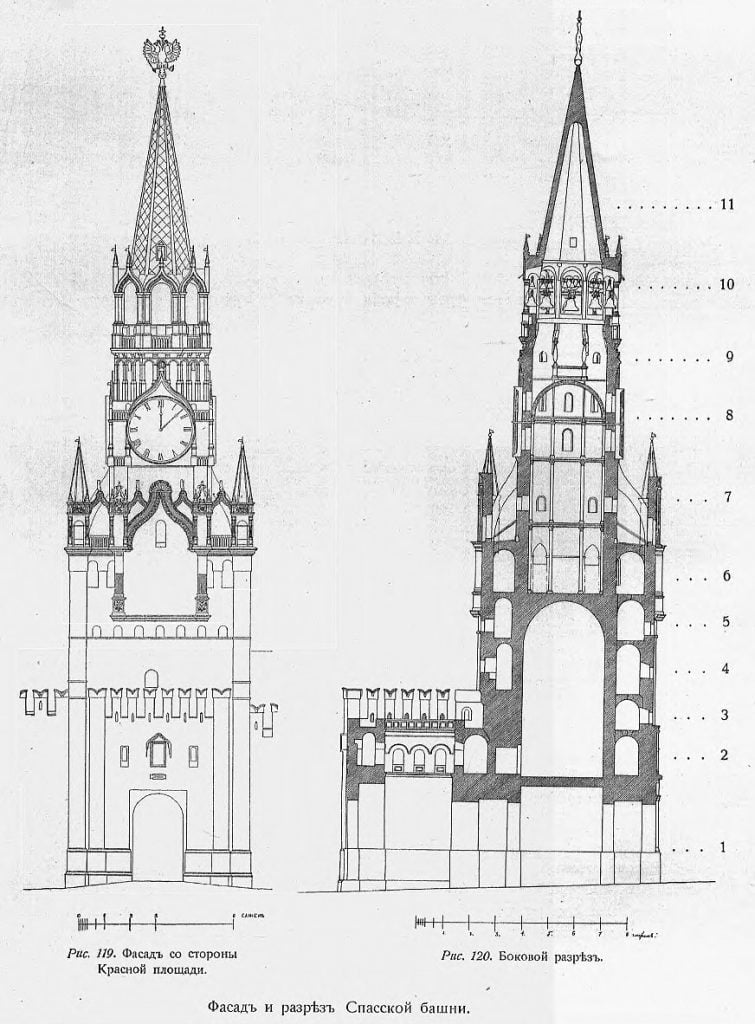
Polish Seige
The Kremlin came under siege by Polish forces from 1610 to 1612 until Prince Pozharski’s army liberated it. Mikhail Romanov became the Tsar following the liberation, followed by his heir, Alexis, and then his grandson, Feodor. The Upper Saviour Cathedral, the Amusement Palace, the Terem Palace, the Armorial Gate, and the Palace of Patriarch Nikon were constructed during their reigns. In 1682, a mass uprising in Moscow resulted in the then-tsar Peter narrowly escaping an attack. He then abandoned the palace and moved to St. Petersburg.
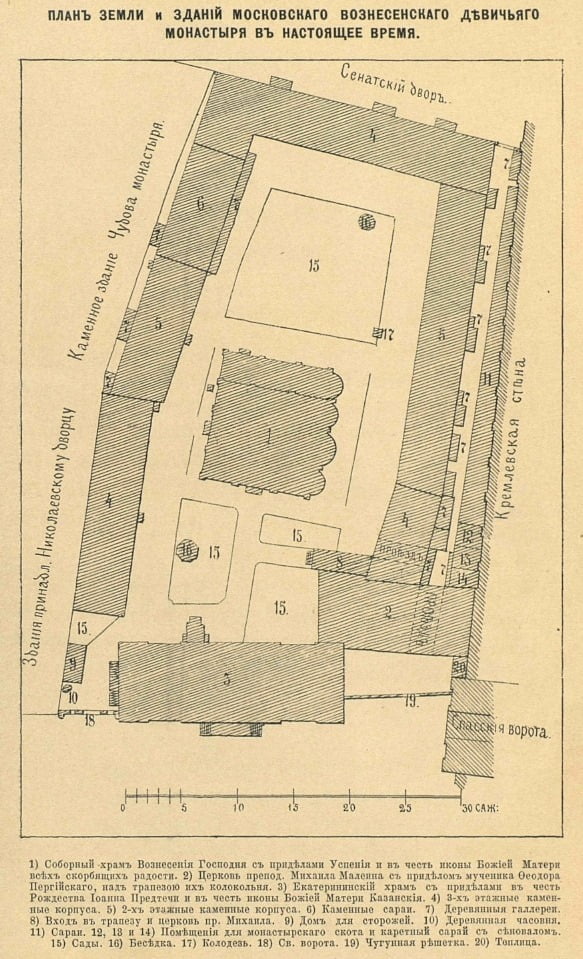
Imperial era and onwards (18th – 21st Century)
Following the tsar’s abandonment of the property, the Kremlin was mostly neglected save for a few ceremonies now and then. In 1773, Catherine the Great established her residence at the Kremlin after being wed to Vasili Bazhenov. Bazhenov renovated much of the property with a Neoclassical design. He also built the Offices of the Senate, still used as the primary workspace for the Russian President today. In the 18th and 19th centuries, the walls of the property were painted white as per the trend in the imperial era.
Between September and October 1812, after the French invasion of Russia, the Kremlin was under the control of French forces. Napoleon gave orders for the fortress to be blown up. The result was the destruction of the Kremlin Arsenal, much of the Kremlin Wall, and many towers. The resulting fires also caused damage to churches and the Faceted Chamber. Much of the destruction was subdued thanks to the rain. Between 1816–1881, Osip Bove took on the site’s restoration under the rule of Alexander I. Many ancient structures were reconstructed in Neo-Gothic styling, while several other buildings were torn down. Check out the characteristics of Gothic castles in this period.
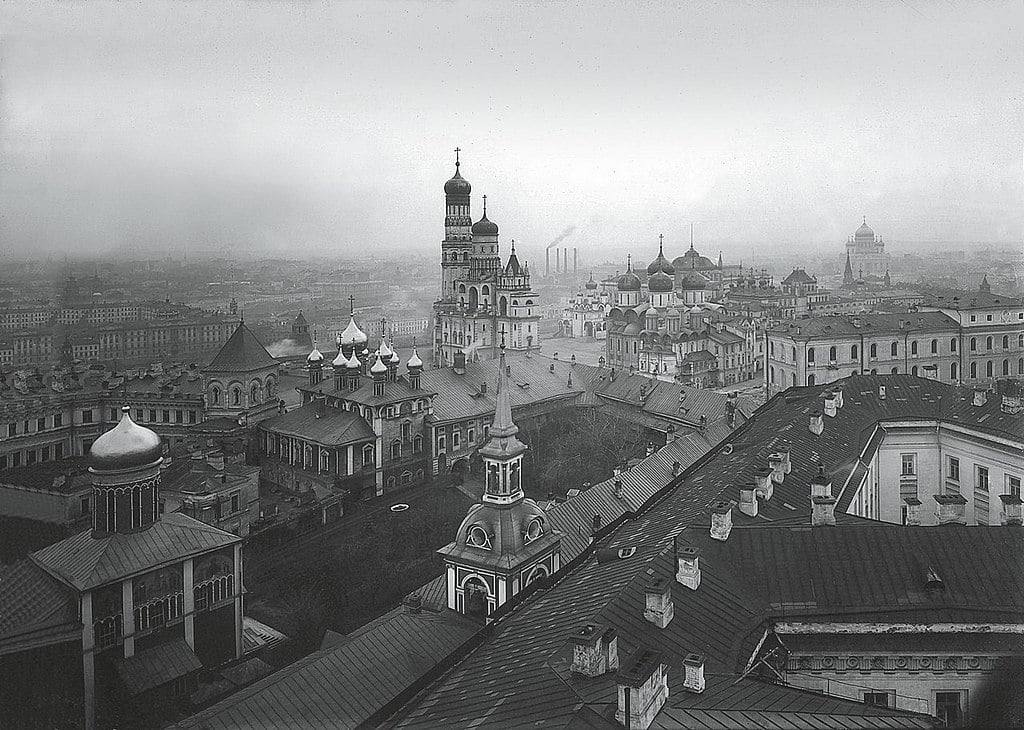
In the 1800s, Tsar Nicholas I ordered the construction of the Grand Kremlin Palace in place of the church of St. John Precursor. He intended to construct something which bore a likeness to the Winter Palace in St. Petersburg. The palace was built between 1839 and 1849, while the Kremlin Armoury was reconstructed in 1851.
Revisit More Historic Places Below or Read Further
Current Times
Before the Russian Revolution in 1917, the Monument to Alexander II and a stone cross commemorating the assassination of Grand Duke Sergei Alexandrovich were added to the Moscow Kremlin. These monuments were destroyed after the revolution by the Bolshevik army.
In 1918, the Soviet government under Vladimir Lenin moved to Moscow, where the Kremlin Senate became Lenin’s residence. During Stalin’s regime, many relics reminiscent of the tsardom were taken down. A military school was built in the place of the Chudov Monastery.
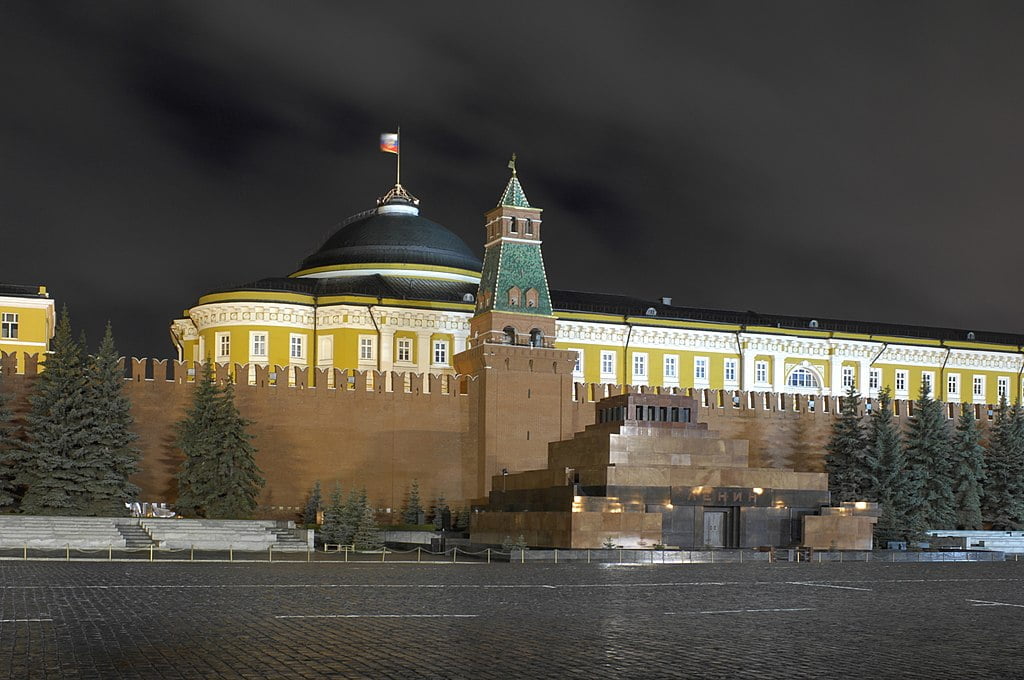
Unlike the white paint of the imperial era, various paint colors were used on the towers during World War II. All the roofs in the city were painted brown while towers were topped with tents. Cobblestone grounds were covered in sand. The effect was to make them indistinguishable from an aerial view.
After the post-Stalin period of the Khrushchev Thaw, the Kremlin opened for public access in 1955. The Kremlin Museums were formally established in 1961. The fortified complex was one of the first Russian heritage sites to become part of the World Heritage List in 1990.
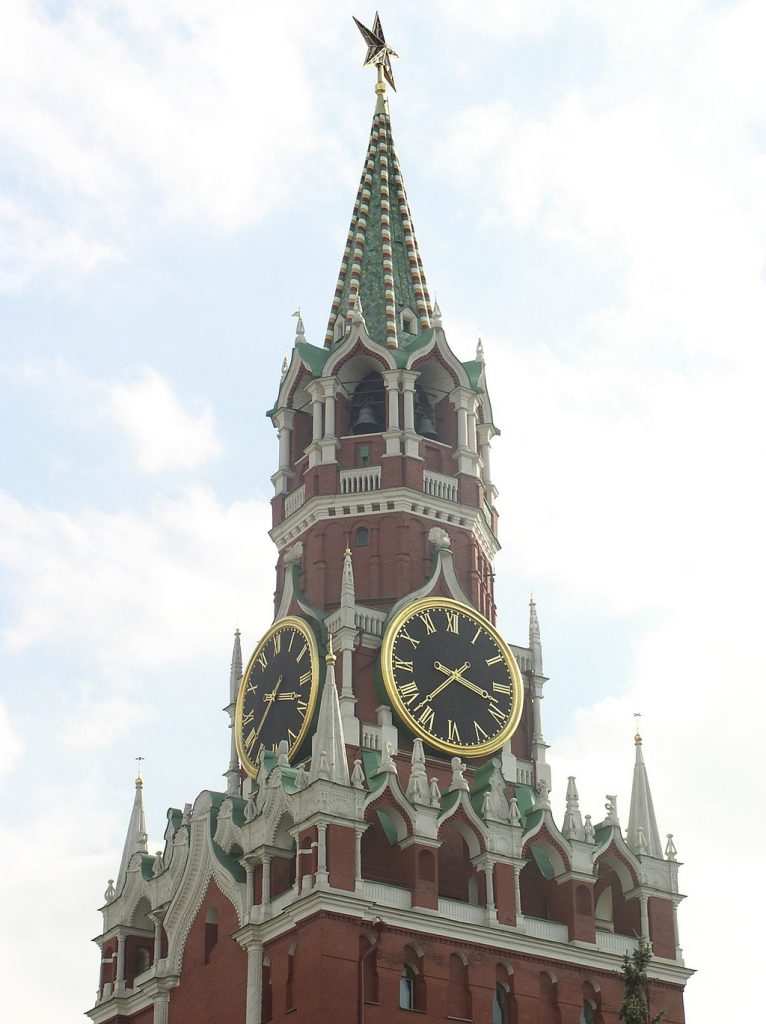
Nowadays, the castle is open for public access as a museum complex with the options of individual and group guided tours for visitors. Visitors can tour the Armoury Chamber, and take a look at the artillery artifacts, the Tsar Bell, and also a collection of artistic Russian wooden carvings and sculptures.
Interesting Moscow Castle Facts
- There is a helipad in the Kremlin for the unobstructed visitation of President Vladimir Putin. It was constructed carefully so as not to damage the architecture of the complex in any way. Here are some of the architectural styles of castles in medieval times.
- The site was known as the ‘grad of Moscow’ up until the 14th century.
- The word ‘Kremlin’ literally translates to ‘fortress inside a city
- The overall area inside the Kremlin walls amounts to about 2,960,000 square feet.
- The rod-shaped bacterial species of Methylophaga muralis was first isolated by scientists from the Kremlin’s decomposing marbles.
Visiting Moscow Castle – Tips and Tricks
Russia is all about preserving its heritage, and Moscow Kremlin is one of the oldest sites in the country. If you love history and exploration, it’s the perfect place to go. Here’s all you need to know about planning your trip
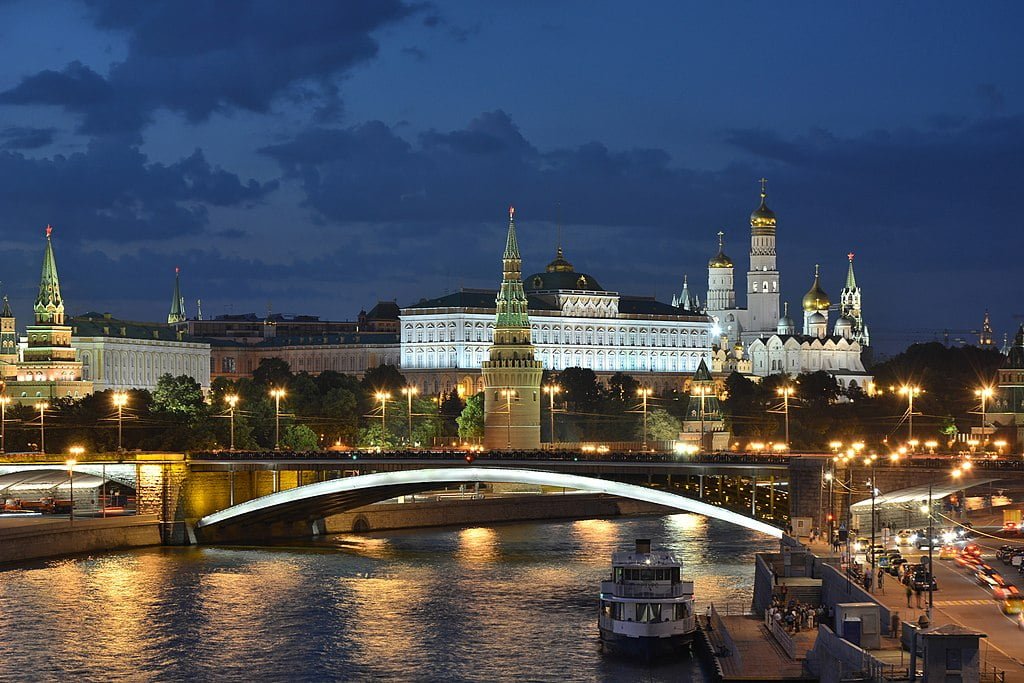
How to get to Moscow Castle?
You can arrive at the Moscow Kremlin from Moscow Sheremetyevo Airport by either taking the night bus, aero express, or via taxi. The most recommended, as well as the cheapest method, is via the night bus. You can have a comfortable ride and arrive at the location in a little over 50 minutes for just €1 ($1 USD). The bus leaves from the airport every half an hour and will drop you at Teatralnaya Ploshchad in about 40 minutes. The Kremlin is a mere 10-minute walk from there.
The second cheapest means of getting there is by the aero express, which would take you a little over an hour and cost you €9 ($9 USD). You would board the train from the airport and get off at Belorussky Rail Terminal. From there, you can get on the subway and get off at Teatralnaya, from where the castle is a simple 8-minute walk.
Taking a taxi may not be the most economical method, but it will definitely get you there in the shortest amount of time. The trip would cost you between €3 and €4 ($3-$4 USD) and take you a little over half an hour at best.
Ticket Prices, Visiting Hours & Travel Tips
Information was checked & updated on November 5, 2023.
The ticket pricing for the Armoury Chamber is 1000 RUB ($11 USD), half-price for people under 16. For the architectural complex, the ticket cost is €12 ($12 USD) for people over 16 and free of charge for children under 16. Accessing the bell tower costs €6 ($6 USD). Children under 14 are not allowed access to the observation deck on top of the tower. Free entrance is provided in all the locations to children under the age of seven and members of the International Council of Museums.
Tickets to the Kremlin can only be refunded in the window between the purchase and the entry time mentioned on the ticket. Expired tickets cannot be refunded.
The castle is accessible on all days except for Thursday. During the summer, you can visit all the museum spaces apart from the Museum between 9:30 A.M. and 6:00 P.M, 10:00pm to 5:00pm on Winter. The Armoury Chamber is open from 10:00 A.M. to 6:00 P.M.
Accessibility may also be subject to the ongoing Covid-19 regulations, therefore it would be better to check the official website of the Kremlin museum before your visit. While Covid transmission is on the rise, you may be required to get a PCR test within 24 hours prior to your visit.
It is also recommended to plan your visit on a day with good weather, as access to cathedrals is limited during extreme weather conditions in order to keep the monuments and artefacts preserved.
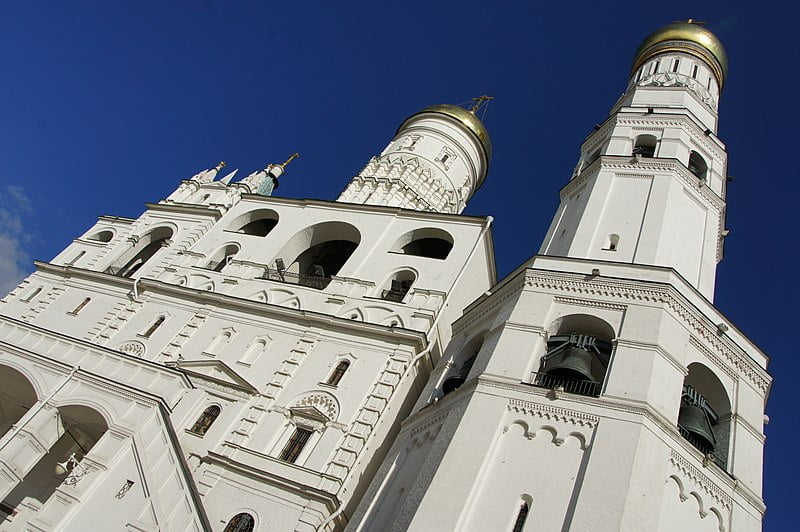
How Long Will It Take to Tour Around?
The complex is expansive, and visitors are recommended to spend a good 2 to 3 hours at the site to experience it in its entirety.
Up to Date Information
For up to date ticket prices and visiting hours visit the official website: https://www.kreml.ru/en-Us/visit-to-kremlin/ticket-prices/vkhodnye-bilety-usloviya-poseshcheniya/
Some words of advice and tips:
- It is recommended to book your tour in advance and preferably during the daytime.
- Huge luggage items, snowboards, skis, bikes, scooters, sleds, etc are prohibited at the Moscow Kremlin.
- Pets and other such animals are not allowed.
- Make sure to be on time, as late entries are not guaranteed to be entertained.
- Restroom access is available in the Alexander Garden next to the ticket office, inside the Armoury Chamber, close to the Patriarch’s Palace, and also next to the Nikolskaya Tower.
- You can look at concert schedules on the Kremlin’s official website to experience a soulful live performance during your visit.
- If you intend to take pictures, do so outside of the cathedrals and armoury as photography within those areas is prohibited.
- Purchasing a guided tour is highly recommended, as the well-informed tour guides will make it both an entertaining as well as and enlightening trip for you.
- The smaller churches in the complex are often overlooked, but they are worth the visit as you will find them to be beautiful and less crowded.

